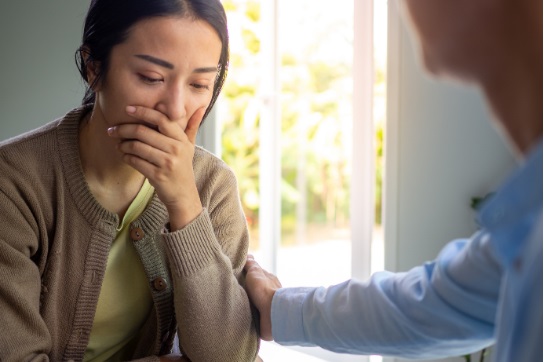It can be challenging to understand the differences between depression vs. sadness. Find out more about the similarities and differences below.
Depression is one of the most common mental health issues in the world. According to data from the World Health Organization, depression affects roughly 264 million people.
And though it’s common to feel down from time to time, you might find yourself wondering if you’re dealing with clinical depression or run-of-the-mill sadness. You might not know the difference between depression vs. sadness in the first place!
It can seem confusing, but we’re here to help. Continue below as we explore the similarities and differences between depression and sadness.
Table of Contents
Sadness
It’s difficult to pinpoint an exact definition of what sadness looks like. For this article, we’ll think of sadness as the temporary feeling of sorrow and unhappiness.
Typically, sadness is brought on by a specific situation. For instance, you might feel sad about the passing of a loved one or being passed up for a promotion at work.
Ultimately, feelings of sadness are something we all experience. Most of the time, the sadness disappears in a few days.
Depression Symptoms
This is where things get a bit more complicated, as a person dealing with depression will experience feelings of sadness. However, a person struggling with depression may also battle feelings of loneliness, suicidal ideations, loss of appetite, and more.
According to the clinical definition of depression, a person is depressed if they experience certain symptoms every day for longer than two weeks.
Should you find yourself battling suicidal ideations, don’t hesitate to call 911 or reach out to a mental healthcare professional for a psychological assessment.
While we often think of sadness as one of the key depression signs, a person struggling with clinical depression may find themselves feeling downright numb to their emotions. As such, it can be difficult to enjoy the things you once loved and even the most exciting activities might start to feel blasé.
Whereas sadness is caused by a situation, depression is often linked to malfunctioning neurotransmitters, thus making it a medical concern as well.
Treating Depression
Though depression can feel debilitating, living with depression is manageable with the proper help. Two of the most common forms of treatment are depression therapy and medication.
Your therapist may use methods like Cognitive Behavioral Therapy (CBT) to help you recognize harmful thought patterns and further explore your feelings.
You’ll also want to talk with your doctor about making some lifestyle changes. While depression isn’t “curable” in a traditional sense, some dietary and lifestyle changes can have a significant impact, and you may require medication such as beta-blockers to help your body produce more serotonin.
Depression vs Sadness: We Can Help
Depression and sadness aren’t mutually exclusive, even if there is some overlap. The key differentiation is the length of time a person feels “blue,” and the persistence of additional symptoms.
Whether you’re battling depression or sadness, talking with licensed therapist can be helpful. Together, you’ll explore the root of your feelings and develop coping mechanisms to reframe negative thinking patterns, understand your triggers, and more.
Now that you know a bit more about differentiating between depression vs. sadness, if you’re considering therapy, we can help.
Schedule a free 15-minute consultation today and find out how you can manage your depression.


